No, it was not love at first sight. The first time I saw the Minox EC I did not fall madly in love with this small piece of black plastic from the nineties. I was charmed then with my Minox B, a slick and jewerly-like bar of matte aluminum graced with knobs, chains, 007 movies charm, and virtually unchanged since my grandpa was loosing his teeth for the first time.
The Minox EC lacks that elegance, is plain and simple, not unlike the swarm of plastic-fantastic 35mm point and shoots from the same era. It’s still a Minox though, and despite being made of plastic, feels like a quality product.
It’s actually quite similar to the infamous Minox 35 series, another world smallest camera (of its kind, and yes, I did compare side by side with Rollei 35 and XA). The family portrait clearly shows that the Minox EC can actually be called the 35ths small brother: same design language in mind, same materials (Makrolon, if you are interested), and even easier to operate.
Unfold the Minox EC (this advances the film), compose your picture using surprisingly bright viewfinder including bright lines for the 50mm equivalent 15/5.6 Minoxar lens, and shoot. The aperture and focus are fixed, and the shutter speed is automatic from 1/500s to 8s. The only control option you have besides the framing, is to change your mind and not to take a picture (for instance if a red led lights up to warn you of a slow shutter speed). It’s an ultimate point and shoot!
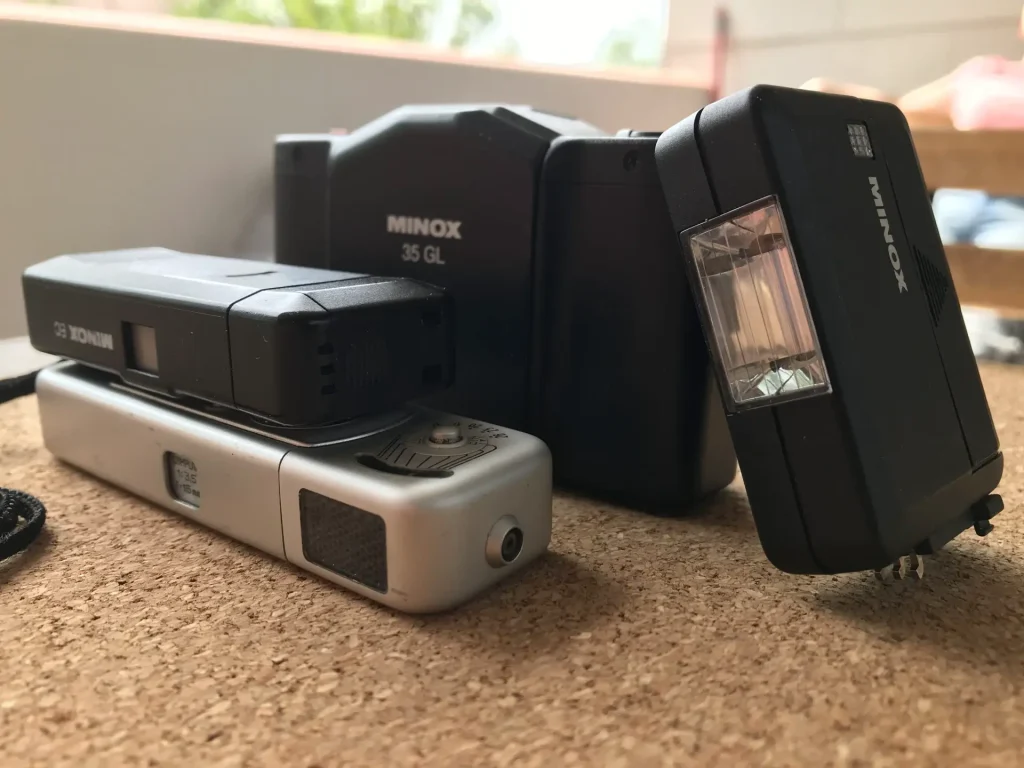
The good the bad and the lens
That comes with the usual limitations, of course (backlit subjects, closeups, slow/fast motion…), but it’s not always a bad thing, actually. Mind that the original Minox (A) was marketed as a simple camera where you don’t have to worry about the aperture and only have one variable to control (shutter speed), so the Minox EC is actually not an ugly duckling in the family. At least, I learned to appreciate that quite quickly once I started to use it after finally fishing it out of the box where it came in together with my Minox B (yes, my first Minox EC was a “lens cap” bought by chance with the B).
The biggest advantage of Minox EC over the older Minoxes is obviously the speed of operation (open and shoot, which allows to catch those fleeting moments). If that’s still not quick enough, you can also just close the camera without loosing a frame (as it is on A and B).
Other advantages are, surprisingly, its size, weight, and robustness. Who could have thought that I’d find the B bulky and delicate by comparison. The Minox EC is by far the smallest and lightest camera in the family and measures just 80mm long (compared to 97 for B, which is ~20% more).
I often wonder how did they manage to pack all that electronics, lens, film, and the battery in! More importantly, however, that it weights half as much at 45g vs 92 including the battery. That’s a bit more than canister of 35mm film, and allows one to wear it on the neck without worrying too much about how it dangles around. Or put in jeans lighter pocket. Or in any pocket with keys, knives etc. It will get some scratches, but the black Makrolon will handle it!
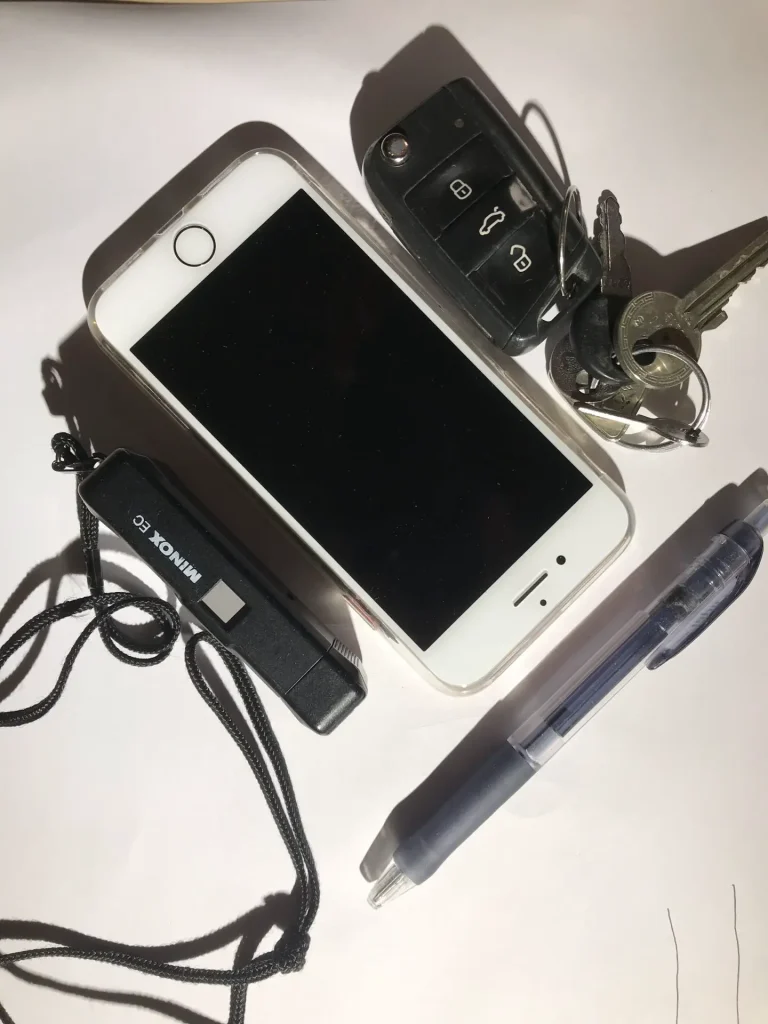
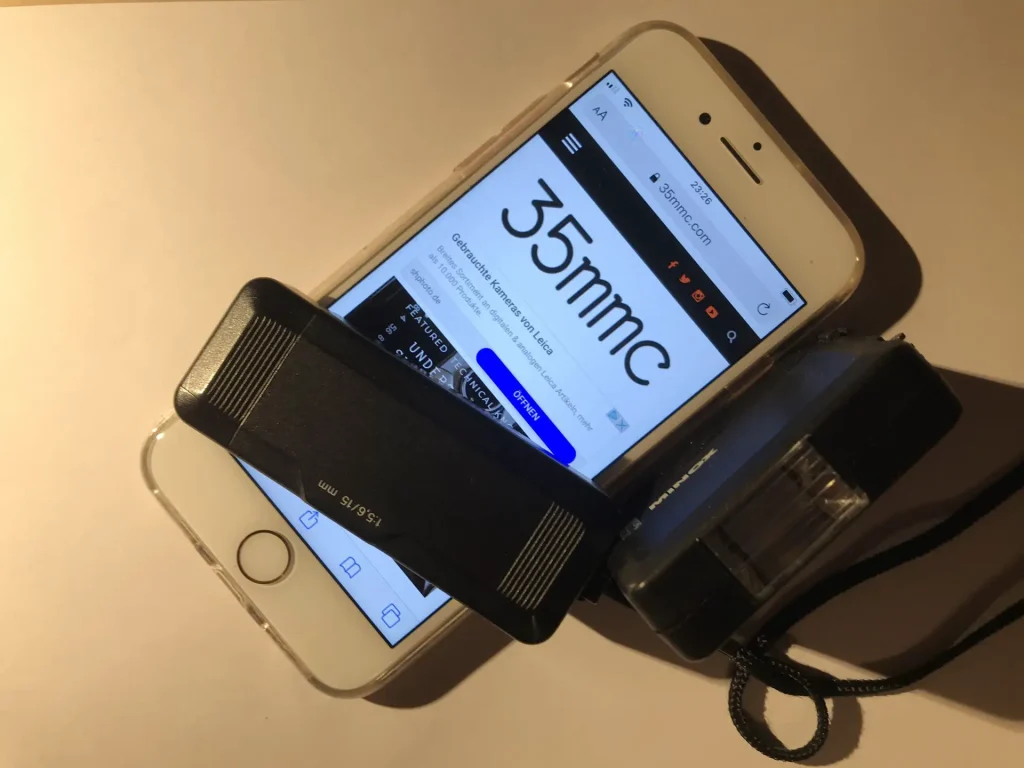
Another big point in its favour is that it there’s an electronic flash unit for it which shares the same diminutive size (the black box in the lower right of the picture above). Well, it’s still larger than the camera, but still is the smallest unit I’ve seen besides the ones included with the early Sony NEX cameras. It takes single AAA battery is also fully automatic! Considering that slow films with ISO less than 100 are typically used with Minoxes, it’s hard to over-appreciate the possibility to snap-on a flash to take indoor pictures.
And, finally, the Minox EC lens. It’s slower than in other Minoxes (f5.6 vs 3.5 to allow hyperfocal shooting from 1m), and is said to be not so sharp as the COMPLANs used in other models. I did not find it to be the case, however. Not only for people pictures from 2-5m which is what this camera is made for, but also for landscapes.
I would say that in most cases, similarly to other Minoxes, you will be limited by the format itself rather than the lens. It is slower, but did I mention there’s a flash? The Minox EC lens however has a big advantage over the lenses of A-B-C series. While I do regularly catch spectacular flares with my B (most likely from its built-in UV filter and shiny aluminium surrounding it), I’m yet to see the Minox EC flare. That’s probably a combination of more modern coatings and the deeply recessed lens.
Anyways, I find it to be the main reason to prefer Minox EC over the B every time I go outside on a sunny day. Luckily this is still possible in Germany, even if one still needs to stay away from other people for the moment.
So what do you get in the end?
Below are several pictures showing what it can do. Not the best ones, but ones from real life. Casual snaps: that’s what the Minox EC is designed for, after all.
Most frames are from a roll of Adox HR50 with Minox EC taken last weekend and almost ruined by my sloppy development. I finally got Minox daylight developing tank and that was the first time I tried to use it. It’s another genius invention of Walter Zapp which is hard to explain in a few words, so it’s better to see some Youtube videos of tank in action.
I slit and load my film myself so it’s missing the hole required to attach the film to the spiral which pulls it out of the cassette once you close the tank. I did cut one with scissors, but not deep enough, so the film was not pulled out and remained in the cassette submerged in chemistry. I did not realise until I finished developing and fixing and opened the tank to wash the film. I dared to repeat the process all over again, and surprisingly it worked!
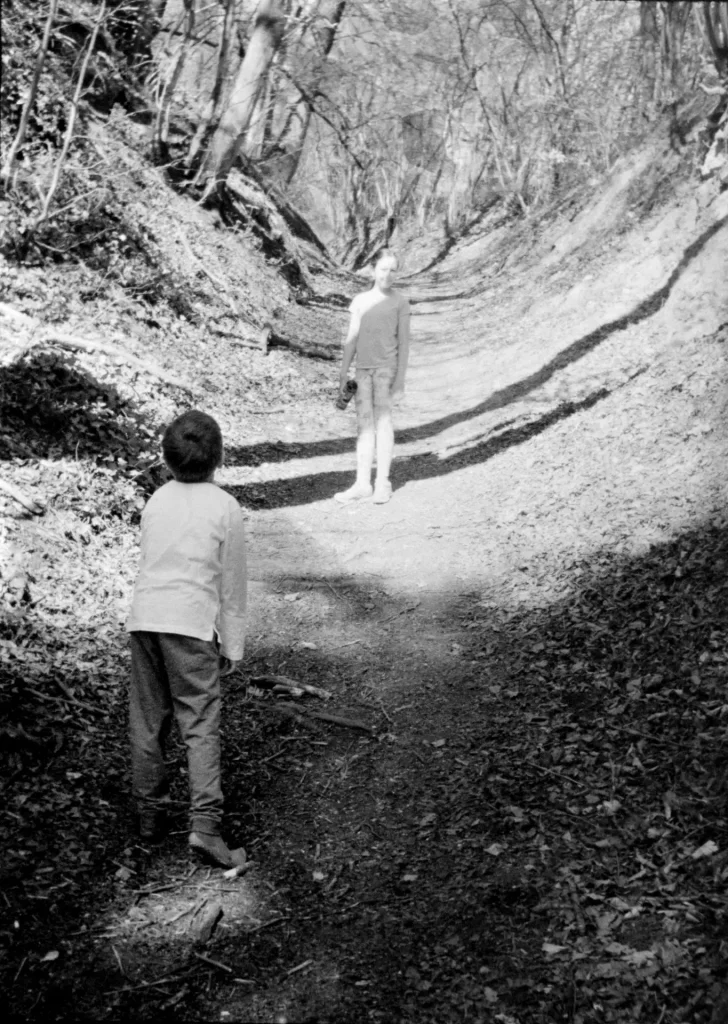
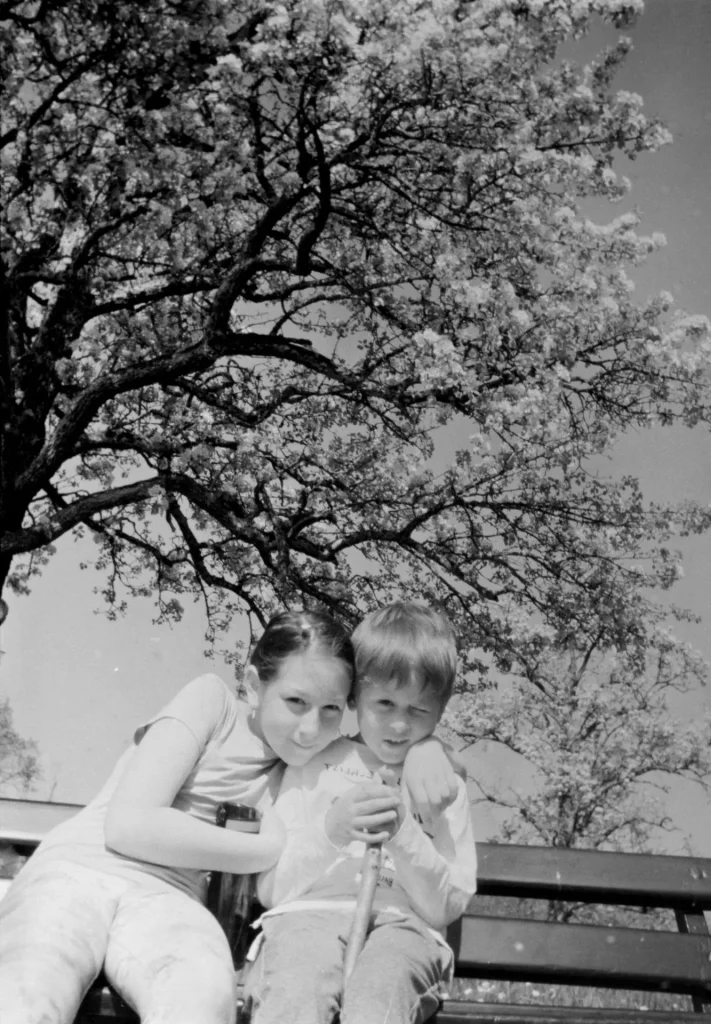
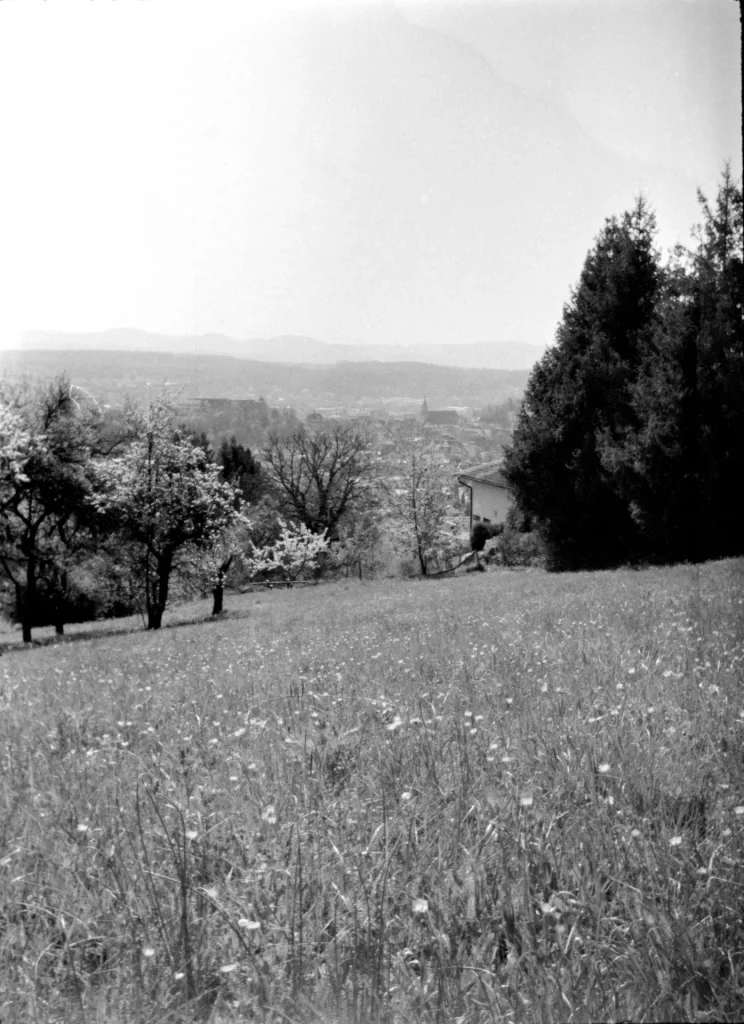
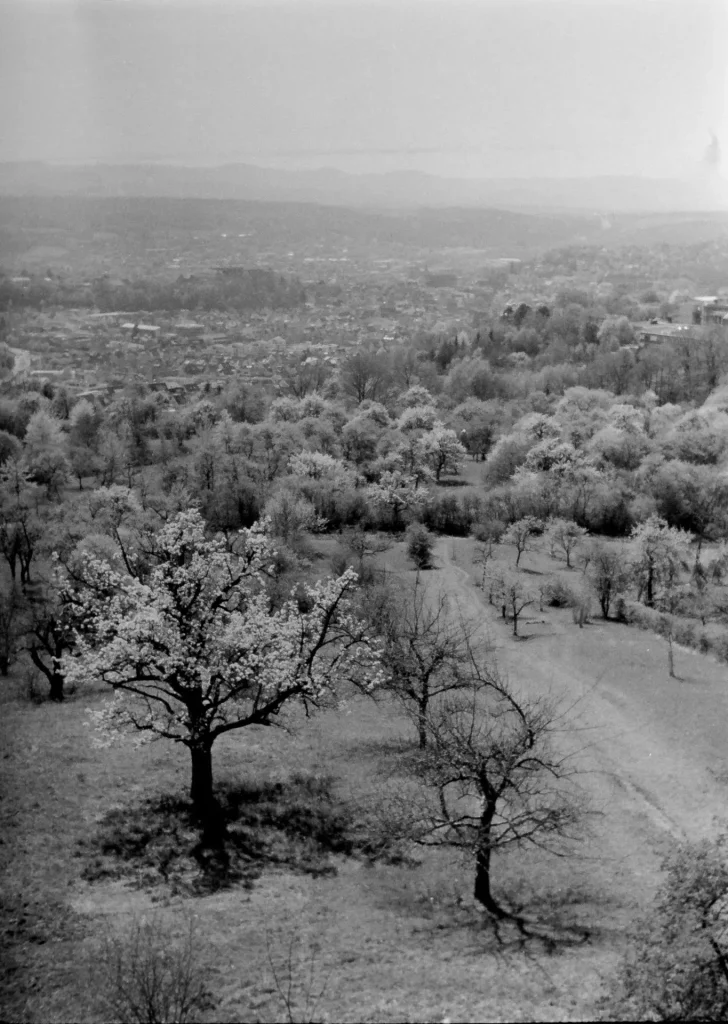
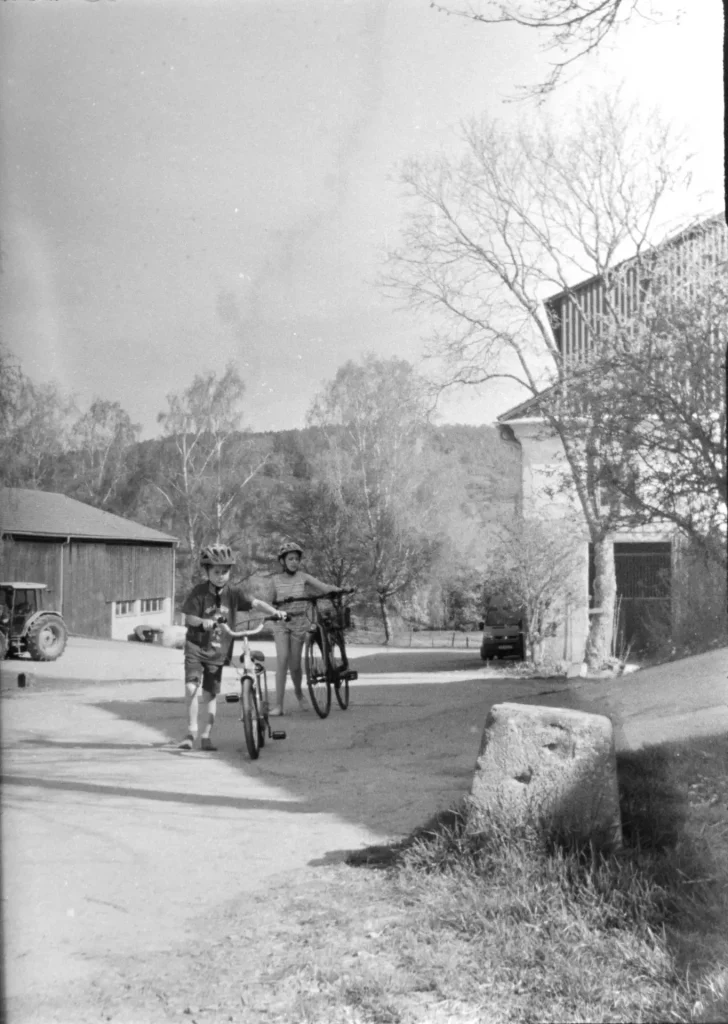
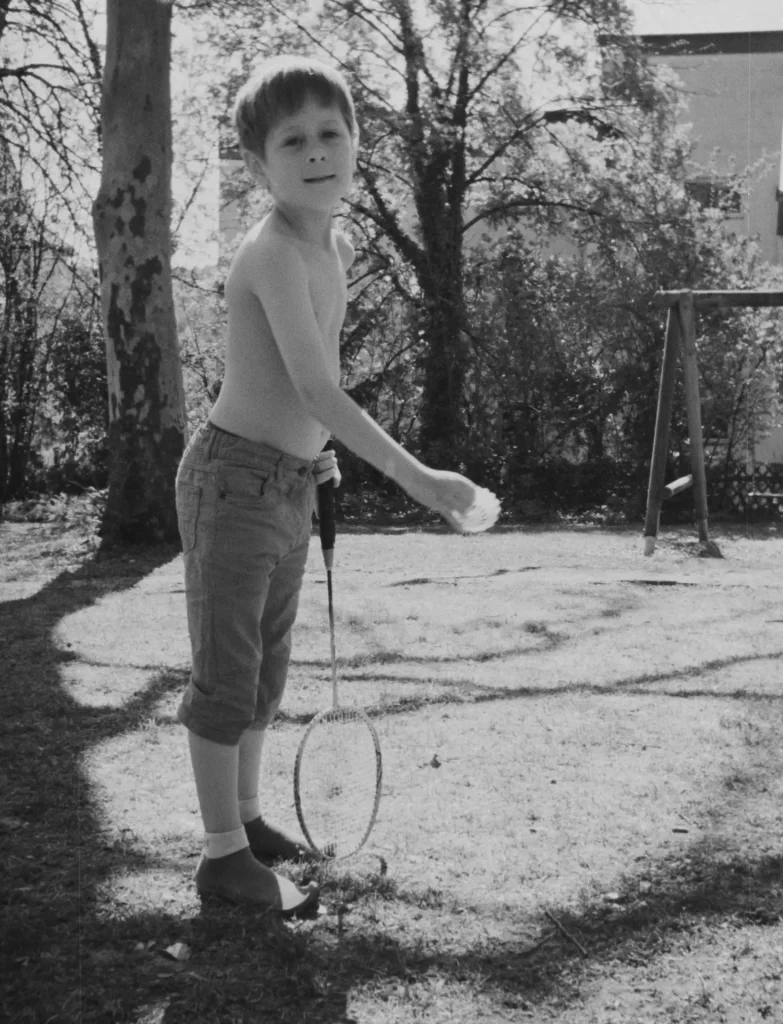
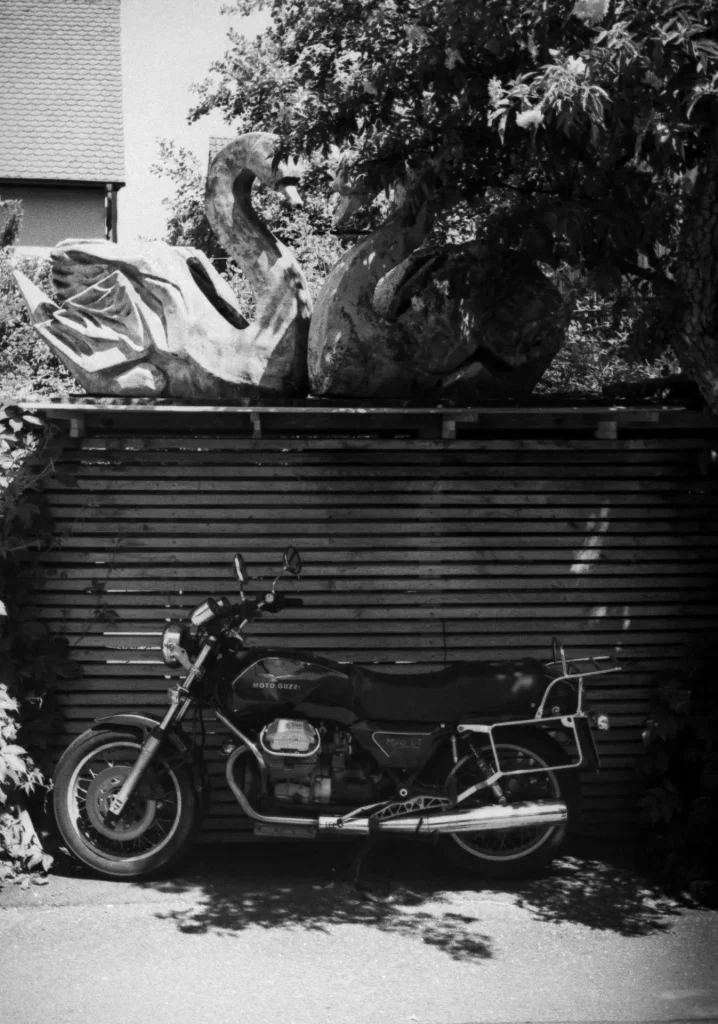
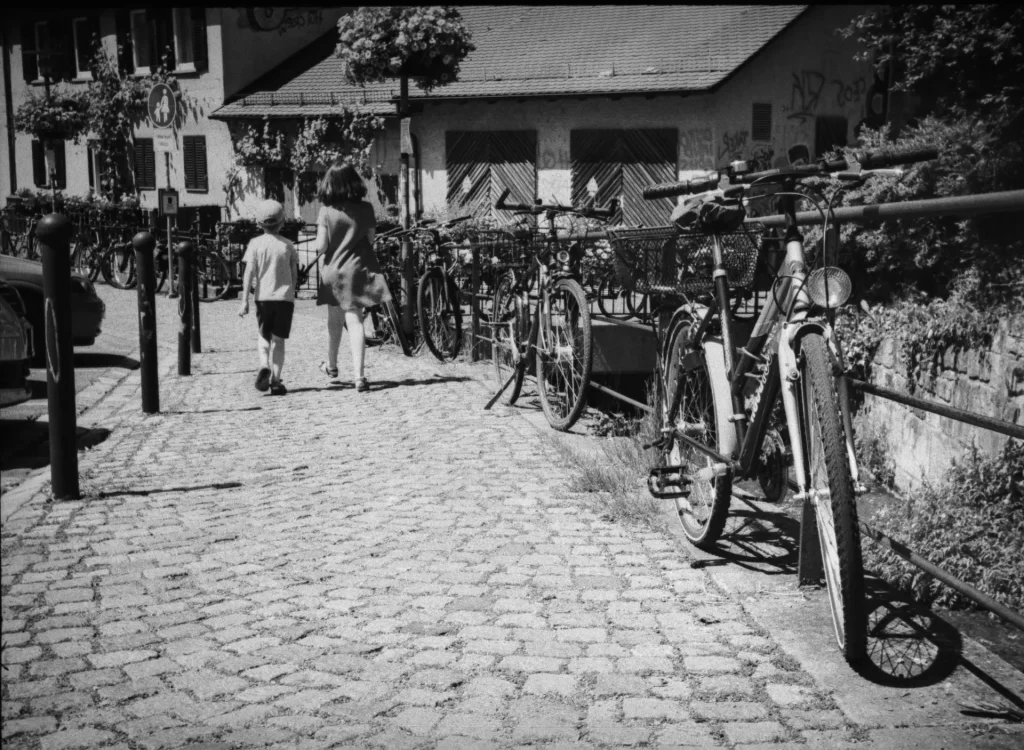
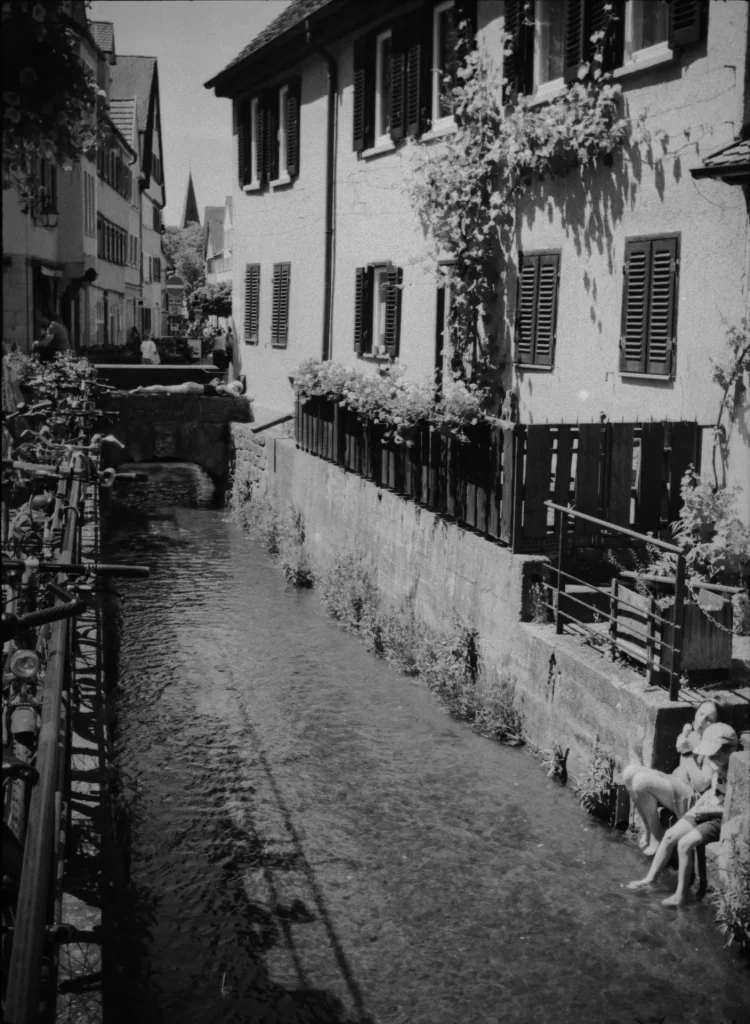

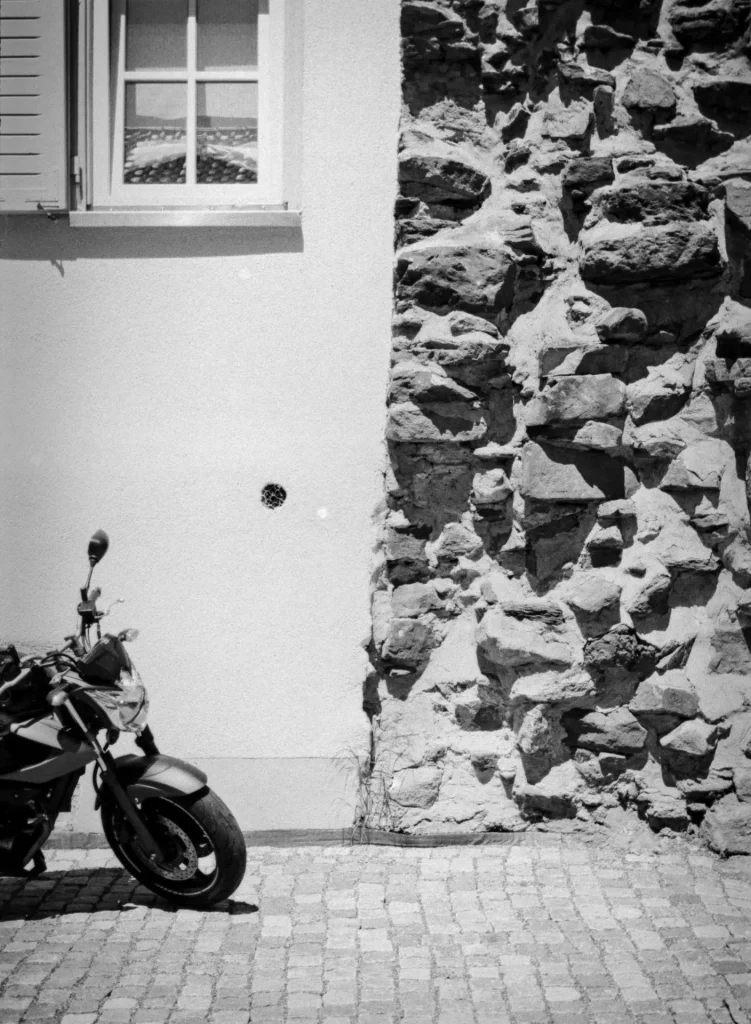
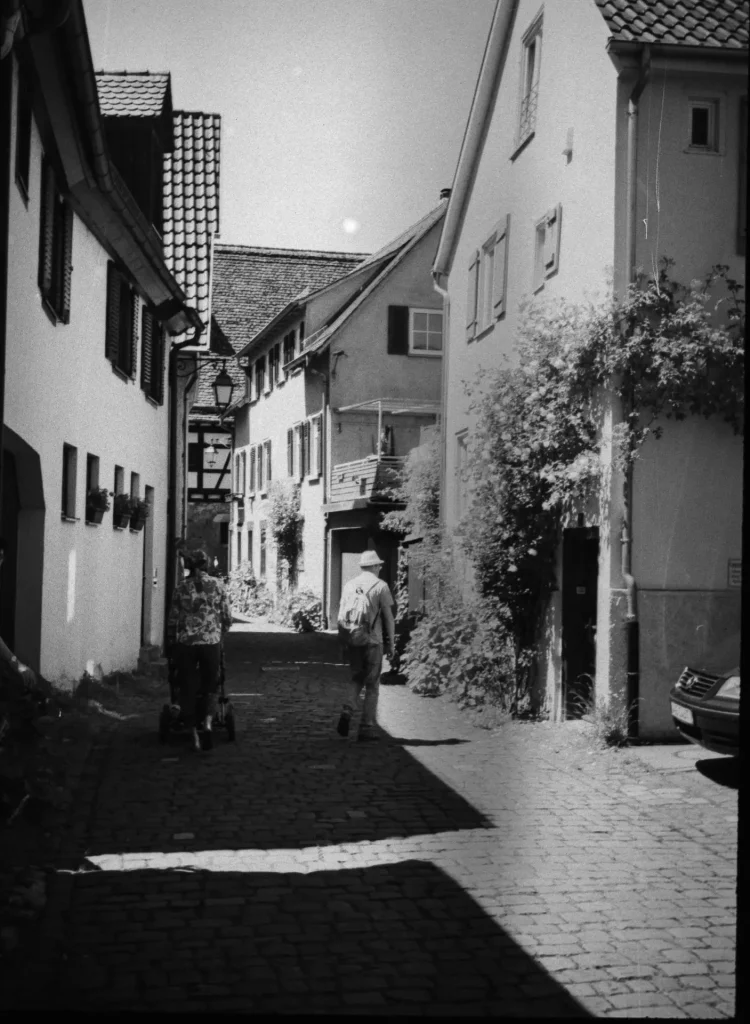
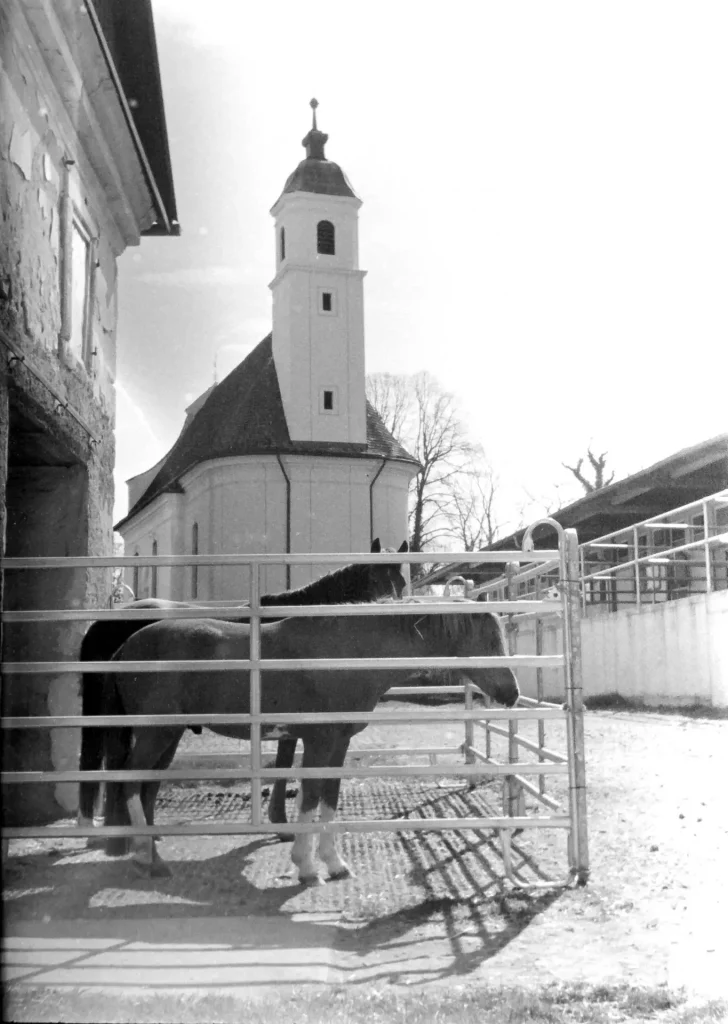
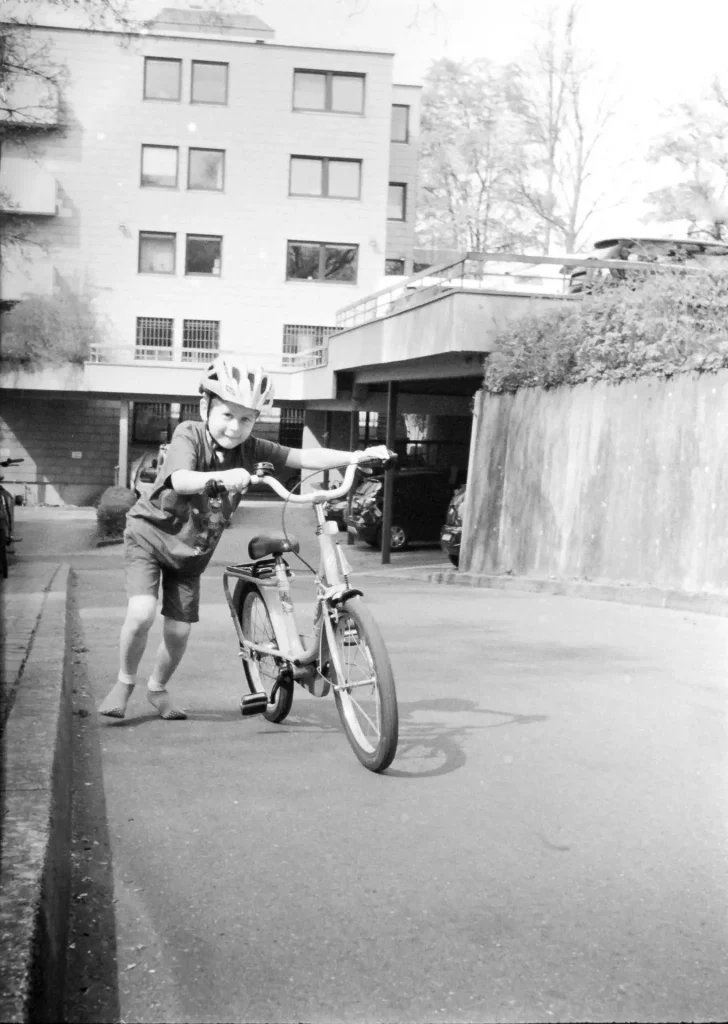
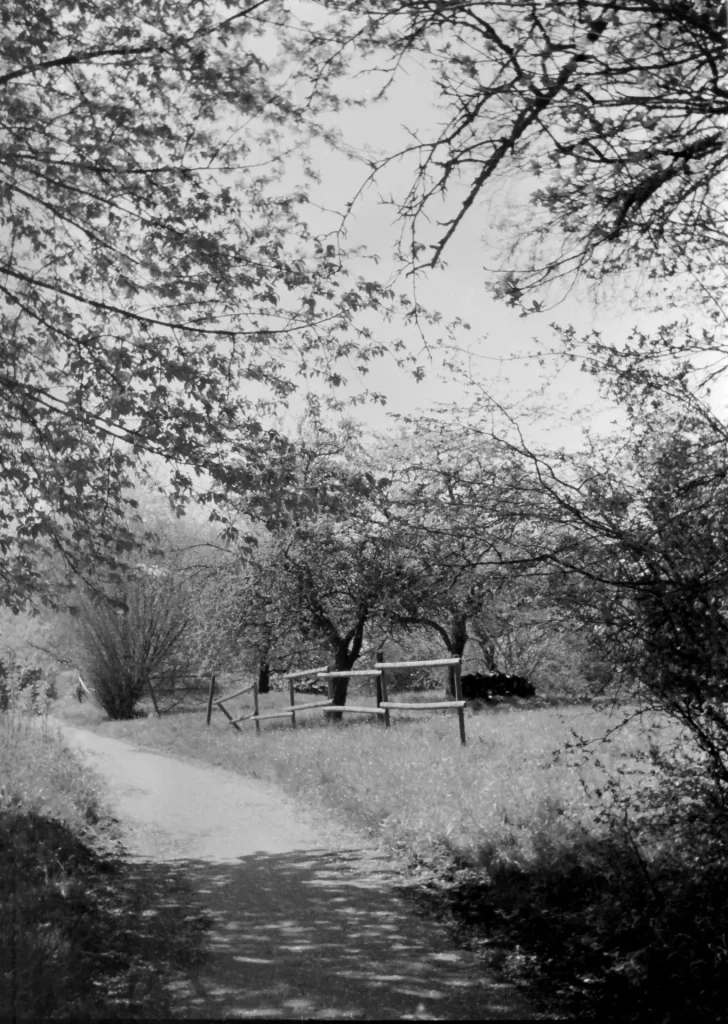
The frames were developed and fixed twice, which is the first and kind of special for to me. Otherwise, the developer was HR-DEV, and time 15 minutes with one agitation at 7 min. The scanning was then done using the cheap zoom dia-duplicator at 2.5x and my Sony A7.
Find more content I have written for 35mmc here
You can find more articles on 35mmc about Minox cameras here
Share this post:









Comments
Eric Norris on Minox EC Review – The smallest usable camera in the world – By Victor Doroshenko
Comment posted: 15/06/2020
Kate Johnson on Minox EC Review – The smallest usable camera in the world – By Victor Doroshenko
Comment posted: 15/06/2020
Lilianna Elrod on Minox EC Review – The smallest usable camera in the world – By Victor Doroshenko
Comment posted: 15/06/2020
James Evidon on Minox EC Review – The smallest usable camera in the world – By Victor Doroshenko
Comment posted: 15/06/2020
To that I added a Minox negative viewer. I never shot the original film it came with and it still resides in the box unused,But I did buy, shoot and send to Minox a couple of new film cartridges. I found the results to be of poor image quality and really not worth the effort. Still, one can say that it produces amazing results for what it is; a tiny 9mm negative. It was originally conceived by Latvian Walter Zapp as a document copying camera for spies and with the right film ( Ortho document film) it reproduced reasonably high quality negs for the the time (1938/9). When the Nazi's took Latvia, they took Zapp's camera back to Germany and with some minor modifications put it into production. It was treasured by spies all over the world and lusted after by movie goers who saw it in action in many Hollywood WWII spy flicks.
The real pleasure in owning a Minox B is, well, just owning it. It is a beauty of industrial design with every switch, slide and button crafted with such precision that it is a pleasure to hold and operate. I haven't used my Minox B since shooting the first two rolls back in the 1970's, but I will never sell it. Every once and a while I take it out and study it closely strictly with an engineer's eye and I smile.
Max D. on Minox EC Review – The smallest usable camera in the world – By Victor Doroshenko
Comment posted: 16/12/2023